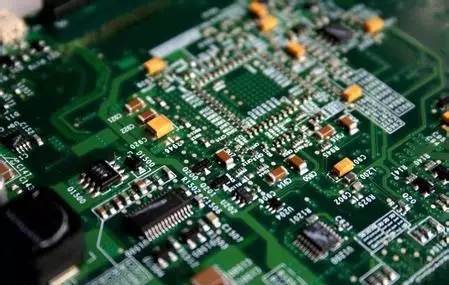How to ensure the stability and reliability of electronic components? You must know these testing methods
Date:2024-07-08 14:00:00 Views:1543
Electronic componentsyesElectronicsThe basic components of a device, their performance and quality are directly related to the stability and reliability of the entire device. Therefore, accurate testing is crucial in the production and use of electronic components. This article will provide a detailed introduction to the testing methods for electronic components, including visual inspectionelectricalPerformance testing, environmental adaptability testing, and other aspects.

1、 Visual inspection
Visual inspection is the initial and most direct testing method. By observing the appearance of electronic components with the naked eye or magnifying glass, it is possible to preliminarily determine whether there are obvious defects or damages. The appearance inspection mainly includes the following aspects:
inspectcomponents and partsWhether the packaging is intact, and whether there are any damages, deformations, or cracks.
Observe whether the pins of the components are complete, without bending or breakage, and whether the pin spacing meets the requirementsSpecificationsrequirement.
Check for rust, dirt, or other foreign objects on the surface of the components, which may affect their performance.
For components with identification, check whether the identification content is consistent with the required specifications to ensure the correctness of the components.
2、 Electrical performance testing
Electrical performance testing is the core part of electronic component testing, which determines whether the performance meets the standard by applying specific electrical signals to the components and measuring their response. Electrical performance testing mainly includes the following aspects:
resistanceTesting: UsingA multimeterOr measure the resistance value of the component with a resistance tester to determine whether its conductivity meets the specification requirements. Especially forresistorpotentiometerResistance testing is essential for electronic components.
capacitanceTesting: measured using a capacitance testercapacitorThe capacitance, tangent value of loss angle, etcparameterTo evaluate its performance. Capacitors play a role in energy storage and filtering in electronic devices, so their performance testing is particularly important.
Inductance testing: measured using an inductance testerInductorThe inductance, quality factor, and other parameters are used to determine its performance. Inductors are mainly used in electronic devices for functions such as energy storage, filtering, and voltage transformation.
semiconductorDevice testing: FordiodeSemiconductor devices such as transistors and field-effect transistors require testing of parameters such as forward voltage drop, reverse leakage current, and amplification factor. These parameters directly affect the working performance and stability of semiconductor devices.
Integrated circuitTesting: Integrated Circuit(IC)It is one of the most critical components in modern electronic devices. The testing of the IC includes functional testing, DC parameter testing, AC parameter testing, and timing testing to ensure that the IC can operate normally under various working conditions.
3、 Environmental adaptability testing
Electronic components may face various harsh environmental conditions during actual use, such as high temperature, low temperature, humidity, vibration, etc. To ensure that the components can still function properly under these conditions, environmental adaptability testing is required. Environmental adaptability testing mainly includes the following aspects:
Temperature testing: Place the components in a high or low temperature environment and observe their performance changes. Through temperature testing, the stability and reliability of components under different temperature conditions can be evaluated.
Humidity test: Expose the components to a humid environment,testingIs there any corrosion, leakage or other phenomena. Humidity testing helps evaluate the moisture-proof performance of components in humid environments.
Vibration testing:simulationDetect whether the components can withstand the stress caused by vibration in the vibration environment that may be encountered during transportation or use. Vibration testing helps evaluate the vibration resistance and service life of components.
Impact testing: By applying instantaneous impact force to components, it detects whether they can withstand the damage caused by the impact. Impact testing helps evaluate the impact resistance and structural strength of components.
4、 Aging test
Aging testing is to evaluate the performance changes of electronic components after long-term operation. By simulating the usage of electronic components under actual working conditions, long-term power aging is performed to detect their performance degradation. Aging testing helps predict the service life and reliability of components, providing a basis for equipment maintenance and replacement.
5、 Reliability testing
Reliability testing is to evaluate the ability of electronic components to complete specified functions under specified conditions and within a specified time. Reliability testing usually includes accelerated life testing, reliability screening testing, etc. Through these tests, potential defective components can be screened to improve the reliability of the entire machine.
6、 Summary and suggestions
There are various testing methods for electronic components, covering multiple aspects such as appearance inspection, electrical performance testing, environmental adaptability testing, aging testing, and reliability testing. In practical operation, appropriate testing methods should be selected based on the type and usage scenario of the components to ensure that the performance and quality of the components meet the requirements. Meanwhile, asscience and technologyWith the development of technology, the testing technology of electronic components is also constantly improving. In the future, more efficient and accurate testing methods will be applied to the testing field of electronic components.
When conducting electronic component testing, the following points should also be noted:
Choose appropriate testing equipment and instruments to ensure their accuracy and reliability meet testing requirements.
Follow relevant testing standards and specifications to ensure the accuracy and comparability of test results.
For components with abnormal or unqualified test results, detailed analysis and handling should be carried out to avoid potential quality issues.
Through a comprehensive and rigorous testing process, we can ensure that the performance and quality of electronic components meet design and usage requirements, thereby improving the stability and reliability of the entire electronic equipment.




 Weixin Service
Weixin Service

 DouYin
DouYin
 KuaiShou
KuaiShou





















